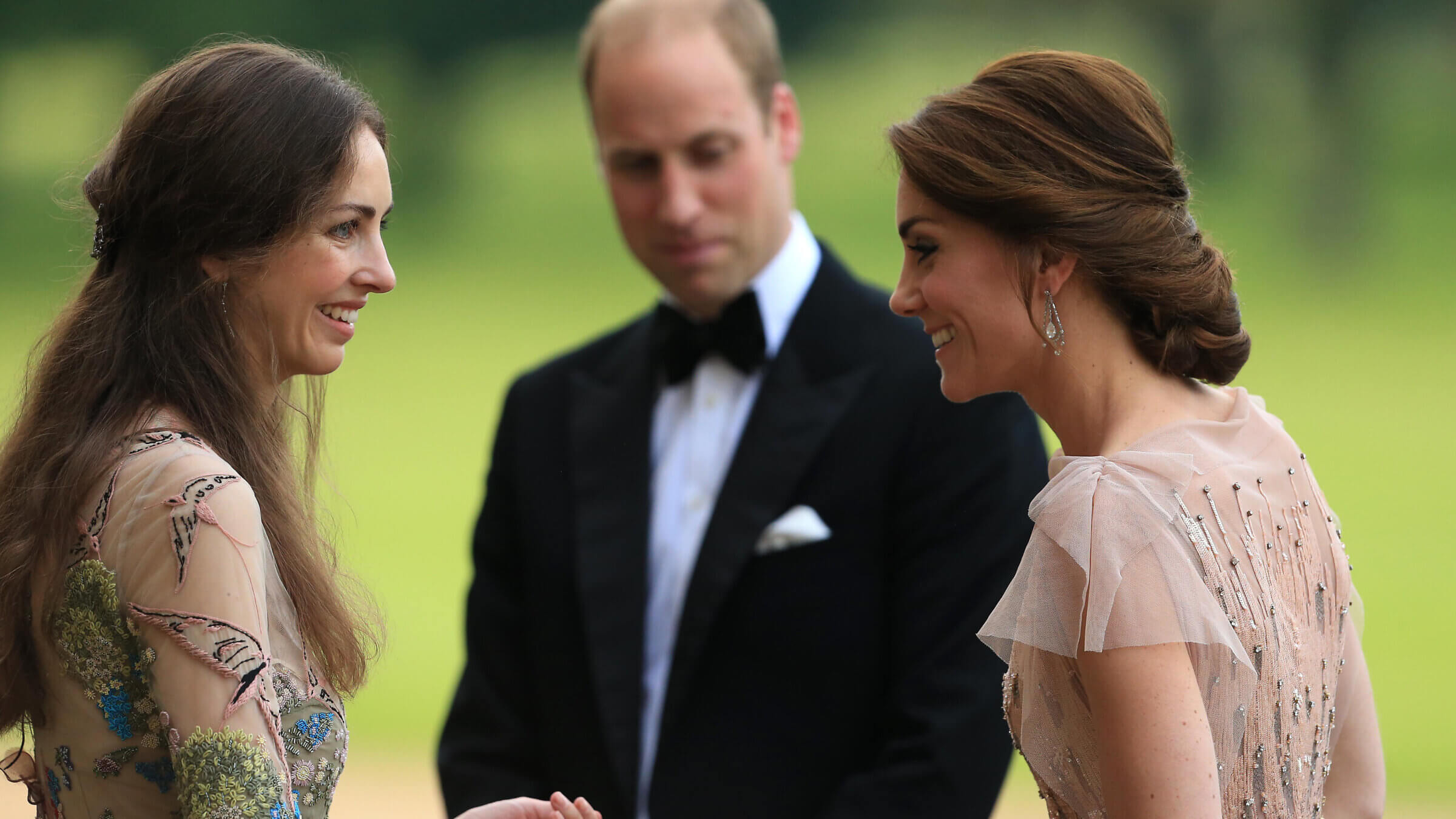The internet’s Kate Middleton obsession may have revealed an unsavory Jewish secret
Internet sleuths are speculating that valuable antiques owned by Prince William’s alleged girlfriend, Rose Hanbury, may have been looted by her husband’s Jewish ancestors

Prince William and Kate Middleton greet Rose Cholmondeley at Houghton Hall. Photo by Stephen Pond/Getty Images
Even casual observers of the royal family are wondering about Kate Middleton’s whereabouts since her last credible appearance on Christmas. The twists and turns of the princess’ disappearance from public view have now included a photoshop scandal, rumors of a reordered succession plan and — of course — a supposed affair that opens the drawing room door to allegations that a famous Jewish dynasty plundered valuable Asian antiques.
Wait, what? Yes, social media sleuths in China are investigating two photoshoots of Rose Hanbury, Prince William’s alleged mistress — she called the rumors “completely false” through an attorney — at home with her husband, David Cholmondeley, who is something called a “marquess.” (This rank puts him above an earl but below a duke, and inspires this American to salute the founders for ridding us of aristocratic titles.)
The images, published in Vanity Fair and W magazine, capture the handsome couple before the sumptuous backdrop of Houghton Hall, their 18th-century Norfolk estate. Among the trappings of their home, wrapped in chinoiserie wallpaper and haunted by busts of old, aristocratic (and white) personages, are several objects that don’t look to have come from the English countryside, like a dressing screen embellished with mountains and cranes.
So, due to the #KateGate / #WhereIsKate missing Kate Middleton / Princess of Wales #Katespiracy drama, lots of people around the world have increased interest in Rose Hanbury and her mysterious connection to Prince William.
— Grannybelly 🌕 (@sugabelly) March 19, 2024
Unfortunately, people in China looked a little too… pic.twitter.com/sGTfoIzkro
On Chinese social media platforms and TikTok, users have claimed that some of the Cholmondeley furniture dates from Qing Dynasty-era China (1644-1911), and speculated that the current Marquess’s ancestors may have looted antiques or acquired them under other morally murky circumstances.
“These cultural relics not only represent the history and culture of our nation but are also the wisdom and hard work of our ancestors,” said TikTok user Cathy Chen.
Houghton Hall, after this article was published, wrote in a statement “the items were not looted but mostly made for export to Europe.”
@cathychen95 Does #rosehanbury #luxurylife come from China? #foryou #fyp #princewilliam #katemiddleton #britishroyalfamily #marquess #cholmondeley #peacehotel ♬ 原聲 - FabulousCathy
But what exactly is the Cholmondeley (preposterously pronounced “Chumley”) connection to China? David, the Marquess, is a descendant through his father of the Sassoons, a Jewish merchant family often called the “Rothschilds of the East.” Hailing from Baghdad, the Sassoons amassed wealth by trading cotton, silk and — oh, yeah — opium, which they brought from India to China.
The estate office at Houghton Hall wrote that “the items of Chinese origin in the photographs to which you refer were purchased by the Walpole family (the original owners of Houghton) during the 18th Century (mid-Qing Dynasty), mostly through agents rather than in China directly.”
There’s a reason why some would assume the objects originated with the Sassoons.The Sassoons were bankers to the Baghdadi pashas and patrons of the arts — they even produced one of the foremost poets of World War I, Siegfried Sassoon — but their reputation in China is a ruinous one. The opium trade had a horrific effect on the country, destabilizing its economy and leading to an epidemic of addiction.
The current Marquess’ paternal grandmother was Sybil Sassoon, who, on her mom’s side, was also a Rothschild (the “Sassoons of the West”). She married George Cholmondeley, who would become the fifth Marquess, in 1913.
Sybil is credited with modernizing Houghton Hall and adding to its formidable art collection, which now includes Old Masters paintings and recent works by artists like James Turrell. According to a 2013 Vanity Fair article, Sybil began “a new golden age for Houghton. In addition to loads of cash, the Rothschild and Sassoon families each possessed remarkable connoisseurship.” (Her husband was really into italic penmanship.)
While Houghton traces the objects origins to the Walpoles, and denies that they are looted, it is a fact that the French and English plundered millions of objects during China’s opium wars. (There were two, the first from 1839 to 1842 with a second from 1856 to 1860.)
For many, the fact that the Cholmondeleys would own any Chinese objects, regardless of their origins, is a reminder of the horrors of British imperialism. While the goyishe nobility led the charge on this front — at least a third of Britain’s publicly owned historic houses have links to the empire’s colonial and slaveholding past — the Sassoon family history shows that a few wealthy Jews partook as well.
“It would be hard to find a country house collection, whether private or owned by the National trust, that does not exhibit items acquired in or from China,” Houghton Hall said, “This is true of most European and American collections.”
While China’s century of humiliation, a period of foreign interference generally dated to the First Opium War, is more dramatic than any domestic squabbles within the royal family, the Cholmondeleys’ Sassoon connection has its own scandalous history.
When Sybil officially joined the Cholmondeley family, the Sassoon and Rothschild clans were none too pleased about their new non-Jewish in-laws.
“They were very upset about her marrying outside the faith,” David told Vanity Fair in 2013. Re: the Cholmondeley side, he said “I should think they were happy to have some influx of … ”
The article notes that David then stopped short, “not quite finishing his sentence.”
Sometimes it’s better not to call attention to yourself, particularly if your family stands accused of ruining an entire empire.

















